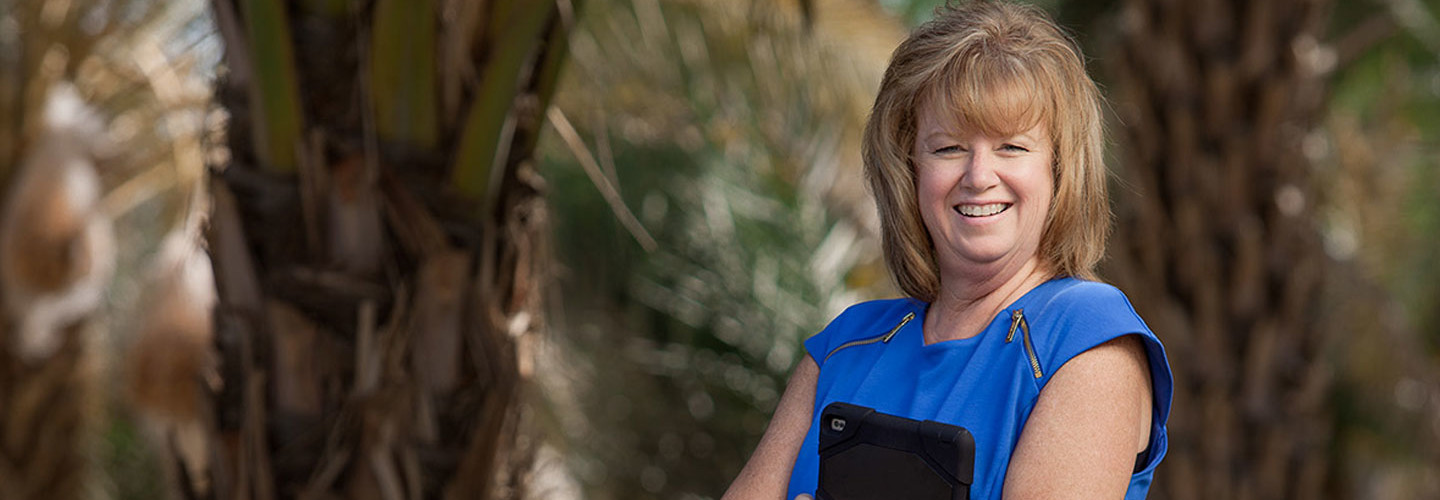How to Protect Devices in the Learn-Everywhere Era
When the President of the United States points to your school district as exemplary, you must be doing something right.
In November 2014, the technology program at Coachella Valley Unified School District in Southern California received just that honor. Despite its location in a high-poverty area — 100 percent of students there qualify for free or reduced-price lunches — Coachella Valley has provided its nearly 19,000 students with tablets.
“Our mobile device program was financed by a general application bond, which our voters approved with 67 percent of the vote back in 2012,” district Superintendent Darryl Adams says. Thanks to the additional tax revenue, the district financed the cost of the devices along with the requisite Wi-Fi infrastructure needed to make the most of their deployment.
Now the district is turning buses into mobile Wi-Fi hotspots to park in neighborhoods that lack Internet access, one of the initiatives that earned President Obama’s praise.
Access to Mobile Devices Solves Only Half the Problem
While some colleges and universities have found bring-your-own-device programs a viable mobile learning model, such policies frequently don’t translate well to the K–12 environment.
“It’s an access issue,” says Patricia Wallace, former head of online programs and IT for the Johns Hopkins University Center for Talented Youth and author of “The Psychology of the Internet.” Young students may have access to anything from the latest smartphone to a basic flip-phone to no device at all.
“A lot of teachers may try a few things, like getting kids to use their cameras to do some interesting work,” she says, “but it’s a struggle for the teachers because they know not all kids have an appropriate device.”
Percentage of tablets in need of repair on a yearly basis at Coachella Valley Unified School District; few of those repairs were due to physical damage
SOURCE: Michelle Murphy, Chief Technology Officer, Coachella Valley Unified School District
Districts that provide a device to every student are better positioned to overcome access challenges while also simplifying a school’s IT management picture.
But the mobile device is only half of the solution. Many Coachella Valley students don’t have access to Wi-Fi at home. The district addresses that problem by partnering with local businesses to create student Wi-Fi zones and working with Internet service providers to offer parents hotspots for purchase. The most innovative is the district’s “Wi-Fi on Wheels” program.
In 2014, Coachella Valley equipped four buses with Cradlepoint routers to provide Wi-Fi service along the longest bus routes and at sporting events.
“We even parked a bus at a local trailer park to serve kids without Wi-Fi at home,” Chief Technology Officer Michelle Murphy says. The IT team chose the Cradlepoint router to overcome a significant challenge to the program: the weather.
“It will be able to withstand the extreme heat conditions of the Coachella Valley, with temperatures soaring well above 110 in the summer months,” Murphy says.
How to Protect Hardware Investments
With 10 years’ worth of funding secured, Coachella Valley administrators took additional steps to protect the community’s investment.
“These devices are going into the hands of 4-year-olds, with junior high and high schoolers taking them home,” Murphy says. “We needed a ruggedized case.”
Murphy and her team chose the Survivor All-Terrain case by Griffin. “We have very little breakage because they’re in that case.”
In Ohio, Cleveland Heights-University Heights City School District has had a one-to-one mobile program since 2008. The district has learned a lot about rollouts since then; for example, a 2010 netbook initiative was plagued with breakage issues.
IT leaders applied those lessons to a more recent rollout of tablets to middle grades and suffered fewer problems, IT supervisor James Meyer says. “Looking back, I credit a lot of that to the decision to put the OtterBox case on those devices.”
This fall, the district was in the midst of a high school Chromebook deployment. Meyer’s team chose an option that included rubberized edges that protect against smaller drops and bangs.
The devices are kept onsite on carts. And by using a Google Apps environment, Meyer says, the students enjoy all of the benefits of mobility without having to move devices between classrooms.
Beyond the Tech
The best one-to-one programs go beyond simply putting technology in student hands.
At Coachella Valley, five teachers are dedicated to training their colleagues in technology integration. More than 110 teachers have completed a certified five-week training course on infusing technology into teaching and learning.
Similarly, Baltimore County Public Schools is in the early stages of a technology rollout that supports its Students and Teachers Accessing Tomorrow (STAT) program.
“It’s multifaceted; it’s not just about the device,” says Jodi Obenstine, director of technical support services. “STAT is about transforming the way teachers are teaching in the classroom and students are learning.”
To support its goals, Baltimore County chose the HP EliteBook Revolve 810 G2, in part because it is resistant to breakage and spills. To further protect the devices, the school district provides a case, specially designed for K–12 users.
While still in its early stages, STAT has already shown promising results: “We’re seeing a lot of student-centered learning as opposed to teacher-directed learning,” says Michael Fort, supervisor of the office of digital learning. “It’s a very exciting time right now.”
The Final Ingredient
Managing a mobile device program takes both pedagogical vision and practical steps to protect the devices. One of the best protections — and one that money alone can’t buy — is a sense of ownership. That’s where comprehensive device use policies, signed by students and their parents, come into play.
“The idea is to make students more accountable for taking good care of the equipment,” Hopkins’s Wallace says.
Schools should set policies that address accountability for damage or loss. Schools frequently pair policies with training. In Baltimore, Fort says his teams put together a series of lessons covering the proper care and the use of the devices. At Coachella Valley, it helps that the program is community-funded and community-supported.
“We really don’t have issues with respecting the device,” says Murphy, adding, “We have achieved a lot of buy-in.”








